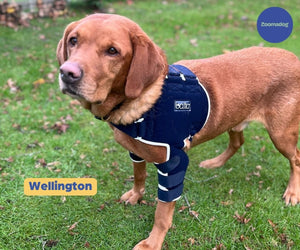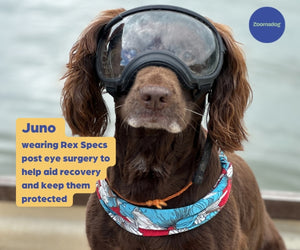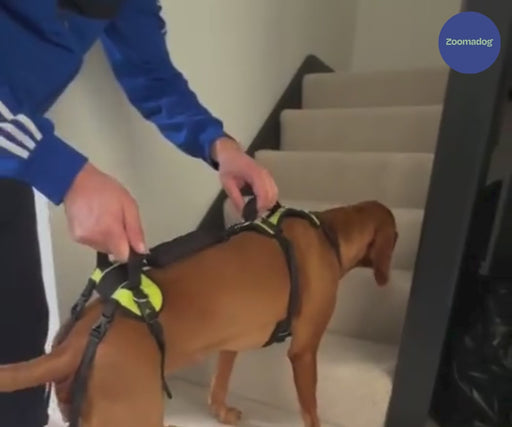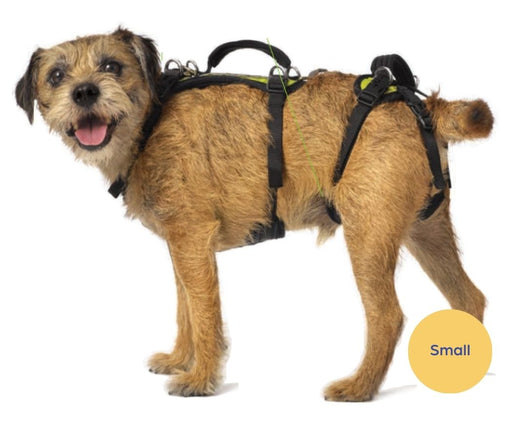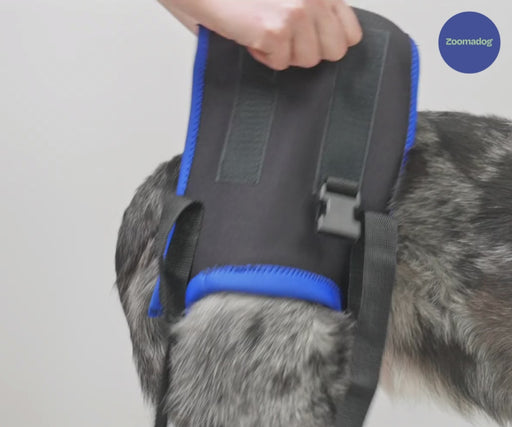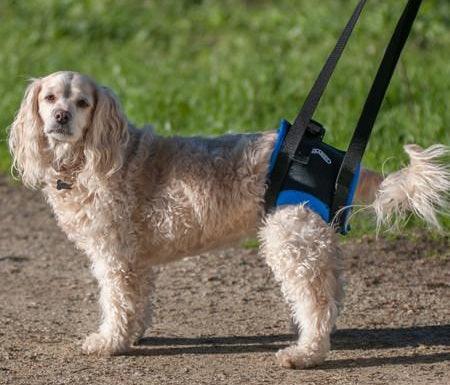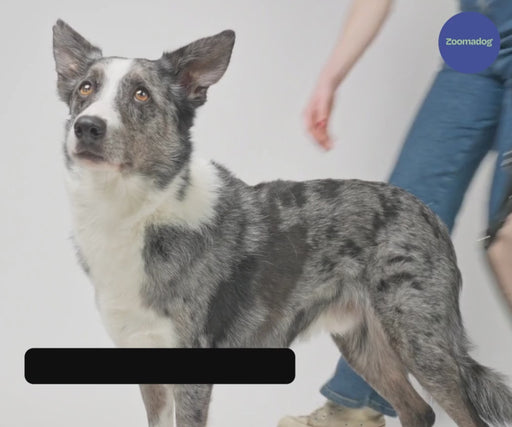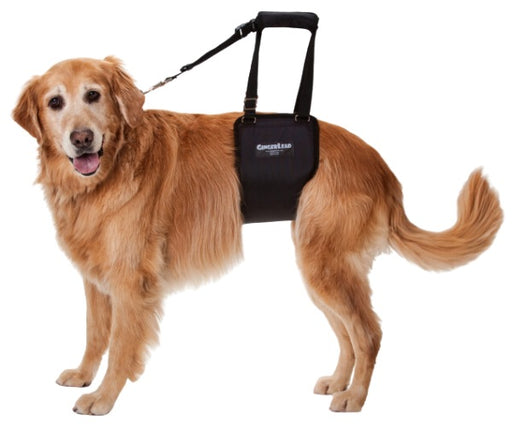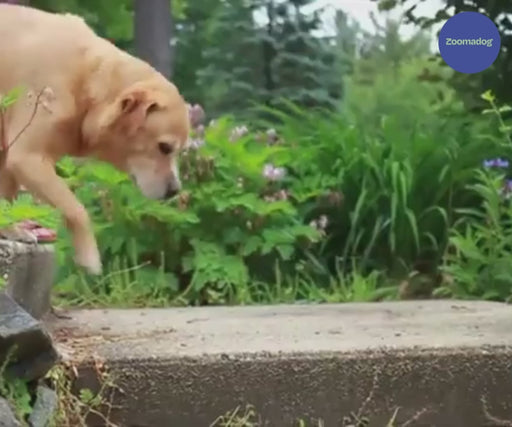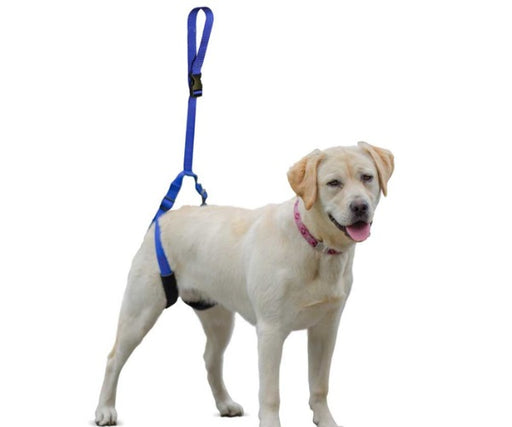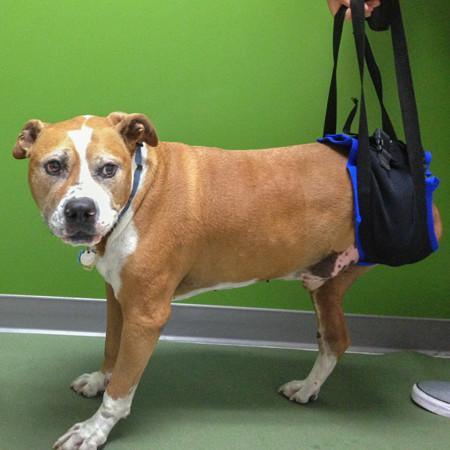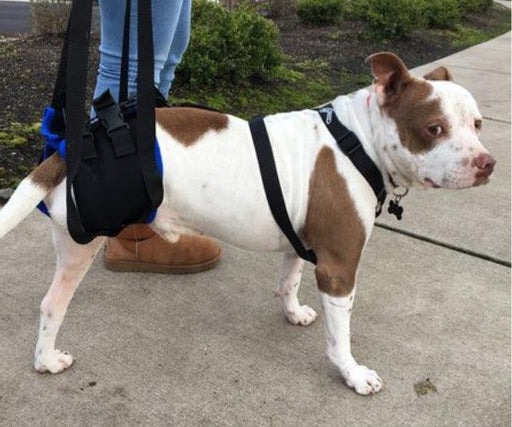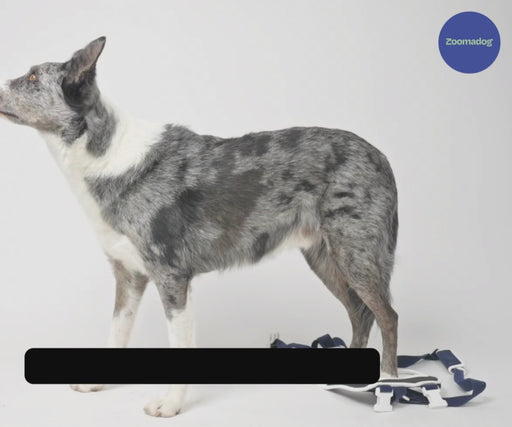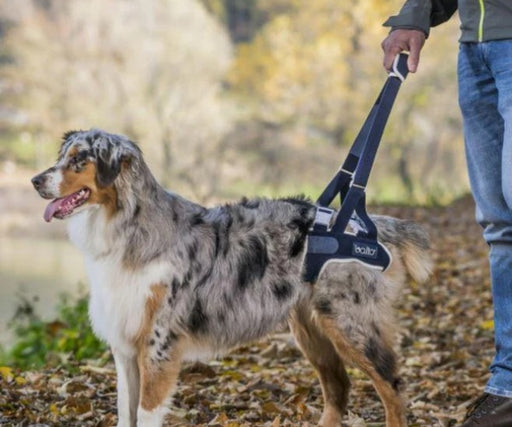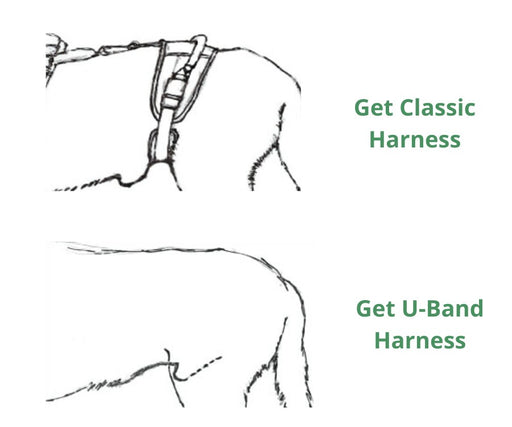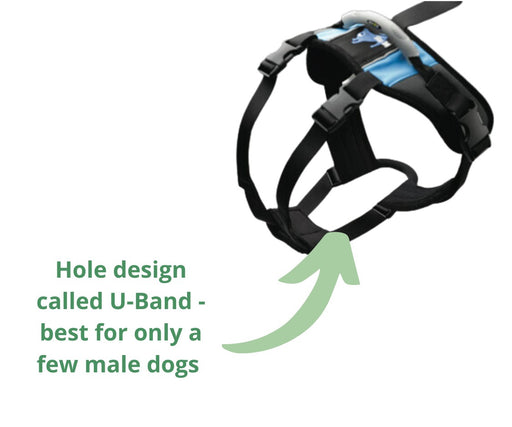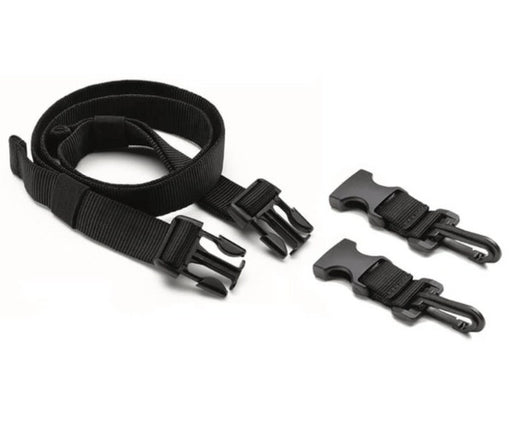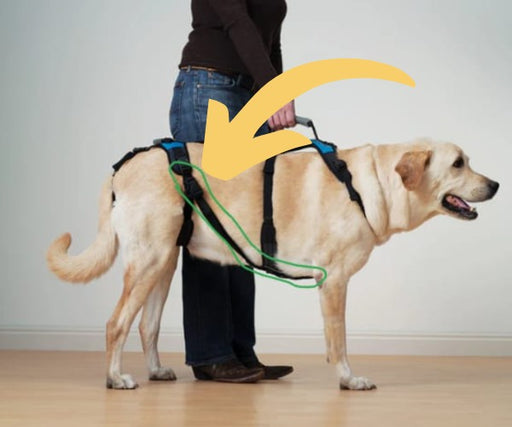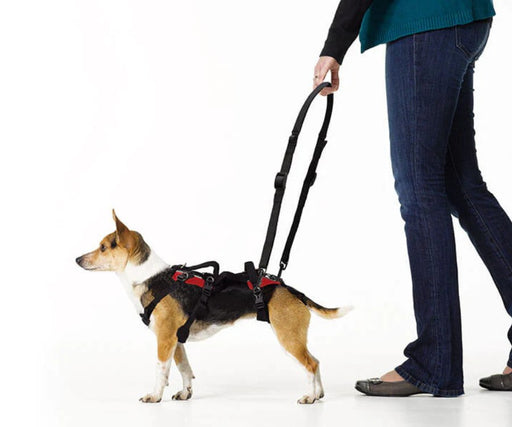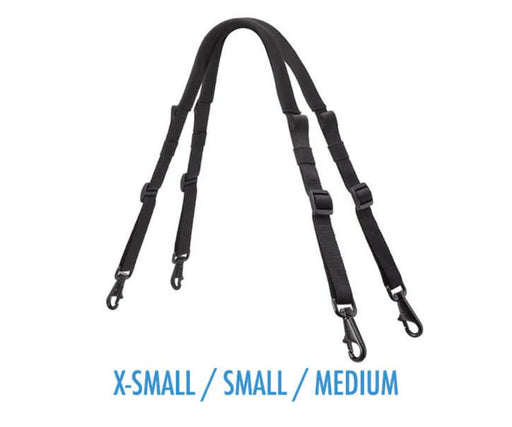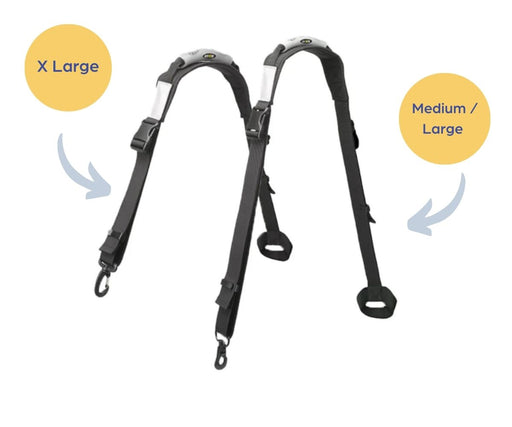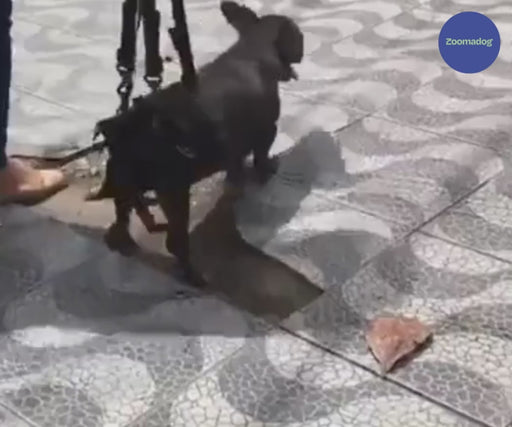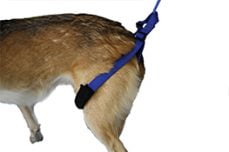When is a Rear Harness Right?
A rear body harness will give your dog much needed support if they’re limping on their back leg, have a spinal injury, or condition such as hip dysplasia, arthritis, or general rear leg weakness. Or perhaps your dog is a rear leg amputee and it’s now necessary to give the other leg a little extra support. It will relieve some of the strain on the remaining leg. Rear leg harnesses are necessary when your dog is struggling with mobility and this is connected to their rear legs. If your dog can’t get up or down the stairs or in and out of the car, now is the time to get a rear dog harness for them.
How will a Rear Harness Help?
Rear body harnesses give you the ability to help your dog walk, with you taking some of their body weight so the rear legs end up carrying less. It will help you stabilise your dog if they’re wobbly or off-balance when walking, or have a condition that is exacerbated when too much pressure is put on the leg. You taking some of their weight might also reduce pain levels. A rear body harness reduces the chance of your dog slipping, falling, or worsening their injury or condition.
How to Pick a Rear Dog Harness?
There are a few things to consider when choosing a rear body harness. Firstly if your dog is an amputee the Walkabout Rear Amputee Dog Harness is specifically designed for that. There is also a popular design for dogs with both rear legs, the Walkabout Rear Lift Walking Dog Harness which is comfortable enough to be worn for long periods of time, e.g. if your dog spends a lot of time resting during the day. The Balto Up Dog Rear Harness Support has detachable straps for walking. There are no-frills designs that give you leverage to lift and support your dog, and ones can be clipped into rear dog wheelchairs.
Please note all rear dog harnesses are designed so your dog can toilet normally while in one.
As an alternative, there are lifting dog slings which go under the belly rather than around the rear legs. They can also be useful in situations where you need to lift your dog up and give them support.
Read about hip dysplasia, a condition that can affect a dog’s rear legs




